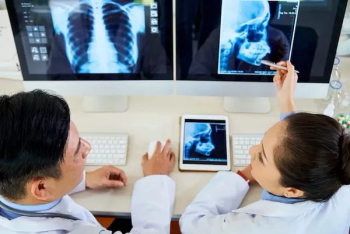
Radiology and cardiology meet at digital divide
The growth of digital cardiac imaging offers a good opportunity to rethink digital imaging archive strategies by adding cardiology imaging to the radiology PACS archive.
The growth of digital cardiac imaging offers a good opportunity to rethink digital imaging archive strategies by adding cardiology imaging to the radiology PACS archive.
While digital cardiac images from Doppler ultrasound and cardiac catheterization labs bring a huge data load to the PACS archive, many users also want access to MR and CT data. These modalities can diagnose some cardiac pathologies and conditions less invasively than traditional cath lab angiography.
The reality, however, is that radiology and cardiology departments are usually completely separated, due to territorial and financial issues. At Children's National Hospital (CNH) in Washington, DC, for example, digital cardiography is supported by cardiology IT and biomedical engineering, not by hospital IT.
"Our hospital IT has absolutely nothing to do with anything that goes on in cardiology or echocardiography," said Dr. Craig Sable, director of echocardiography at CNH. "Our digital cardiology is completely stand-alone."
To move cardiac images into other systems, studies must be exported to a sneaker net.
The reason for the separation is that cardiology wants local control, Sable said.
"Our hospital IT department is not used to dealing with something that requires this much nurturing; plus, their timeline for getting fixes is different than what we're willing to accept," he said. "We accept no downtime. They're just too big to conform to that."
Another issue is that traditional radiology PACS could not store the multiframe objects produced by cardiac catheterization labs and ultrasound scanners. Hospitals therefore need both cardiology and radiology PACS.
But this is changing, as vendors scramble to meet new archive and user demands.
"You will see increasing fusion of radiology and cardiology image storage infrastructures," said Henri "Rik" Primo, director of marketing and strategic relationships for Siemens Medical Solutions.
Primo predicts that in the future, radiology and cardiology will share common image databases, hospital IT will be responsible for the infrastructure, and PACS specialists in radiology and cardiology will maintain and manage patient data.
In the meantime, hospital infrastructures endure an imposed redundancy.
According to Sable, the advantage of keeping cardiology separate is to isolate it from the hospital network, which cardiology sees as exposed.
"Despite our hospital network being as secure as it can be, it's still open to the Internet," he said. "Viruses, downtime, and poor performance are just not something that we're willing to put up with."
Newsletter
Stay at the forefront of radiology with the Diagnostic Imaging newsletter, delivering the latest news, clinical insights, and imaging advancements for today’s radiologists.




